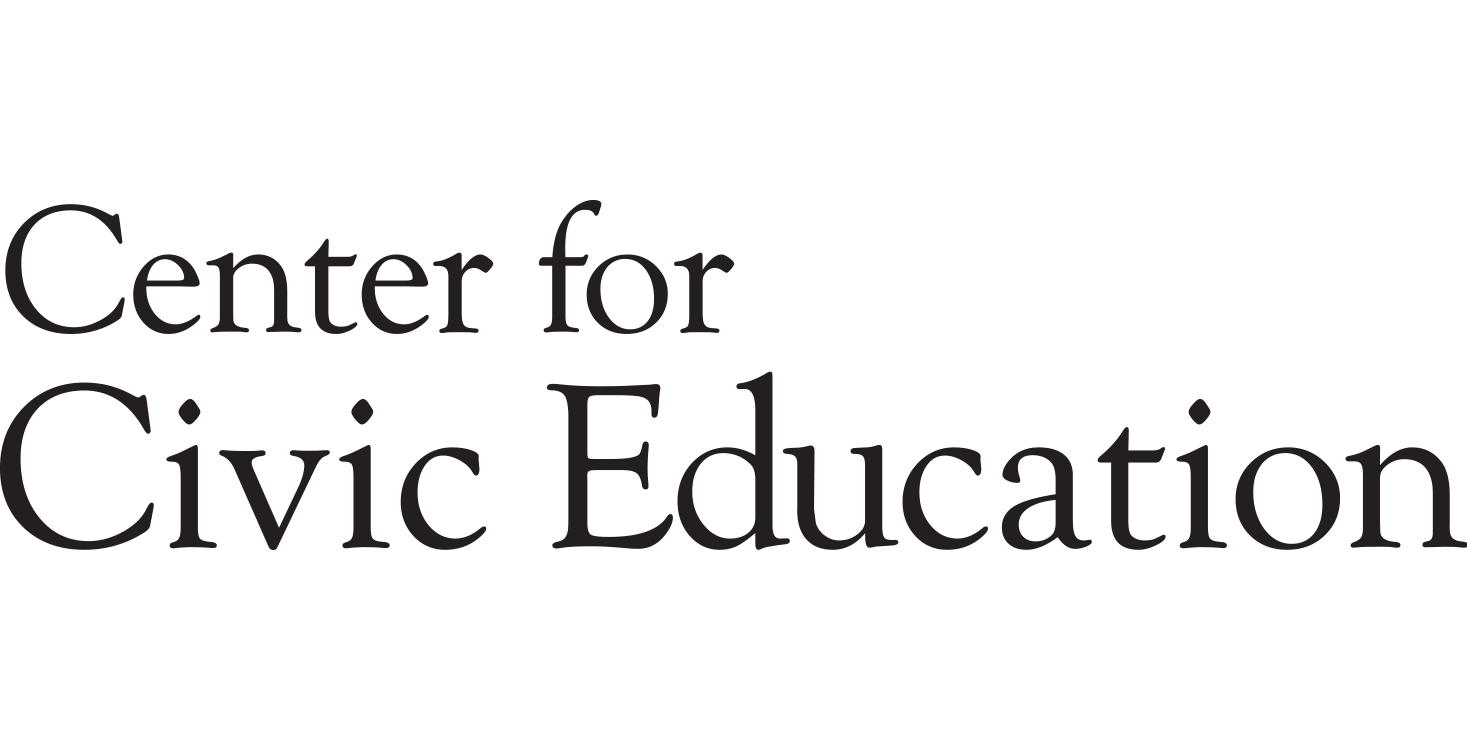
Citizenship
Structured Academic Controversy (SAC) Plan
Launch Activity
Ask participants to jot down and discuss the following questions: “What does it mean to be a United States citizen? What role should the Supreme Court and Congress play in defining citizenship? What current issues are connected to disagreements about who is a citizen?”
Background Information
While listening to the fifth 60-Second Civics podcast series of Civil Discourse: An American Legacy titled Citizenship in America, take notes about how citizen and citizenship is defined, either explicitly or implicitly, in the Constitution and its amendments. Provide copies of the Constitution, including all of the amendments, a summary of the Dred Scott v. Sanford Supreme Court decision, Attorney General Edward Bates’ opinion on the question of U.S. citizenship (1862), a summary of the Minor v. Happersett Supreme Court decision (1875), and Horace Gray’s majority opinion from United States v. Wong Kim Ark (1898) for participants to read. They should look for additional pieces of evidence about how the Constitution defines citizenship. While listening and reading, participants should take notes and be able to summarize the key ideas of each podcast and document.
Vocabulary
Have participants share the words and phrases they found unfamiliar while a volunteer lists them on the (interactive) whiteboard. Be sure to include:
Assign the words and phrases to groups of participants to research and define. Then, have the groups share with the entire class and discuss until all participants are comfortable with the surface meaning of the text.
Describe the Responsibilities of the Facilitator and Participants
“As the facilitator, my biggest responsibility is to keep time and ensure that each group stays on task within their allotted time. Equal time distribution is crucial as part of a structured academic controversy (SAC) because it ensures that both sides of the discussion are given an equal opportunity to speak and react. I will also provide sentence stem prompts to guide each segment of the SAC. Lastly, I will listen to small group discussions to redirect to a focus on evidence-based discussion when possible.”
“As the participant, your responsibility is to work with your partner or group to stay within the allotted time by providing concise, evidence-based responses. If it is your group’s turn to speak, your focus should be on using specific examples of evidence from the readings that support your claim and providing context that connects the evidence to your reasoning about your claim. While the other group summarizes what you said, your role is to listen for accuracy and provide clarification when necessary.”
“If it is your group’s turn to listen, your responsibility is to listen closely and take notes while the other side speaks. When it is your turn to summarize, you should provide a concise overview of the key points made by the other side, focusing on specific statements that they made, and be open to them providing clarification as needed.”
Define and State the Purpose of the Seminar
“In the structured academic controversy (SAC), participants are assigned a stance on a question and work to reach a consensus on a contentious issue. The strategy reinforces the idea that people should seek to understand the other side's argument before committing to a side. Remember that the goal of a SAC is not to win; rather, SACs should give participants adequate time to present content knowledge and diverse perspectives as well as time for clarification questions, small group discussion, large group discussion, and consensus building. The predetermined format allows for structure and support for multiple viewpoints to be heard, understood, and validated while informing everyone’s views on the question.”
Structured Academic Controversy Process
- The Constitution supports a clear definition of citizenship.
Initial Preparation
- Participants are provided central text(s) to read in preparation. This is often done during the previous class period or as homework leading up to class.
Groups are Created
- Participants break into groups. Half of the group is assigned “A” in favor of the statement/question, and half is assigned “B” against the statement or question.
Final Preparation (Can be done during the previous class if time allows.)
- Each side of the discussion, “A” and “B,” find a space separate from the other group to meet and prepare. If either group is large enough, the “A” and “B” groups can be broken into smaller groups.
- During this preparation phase, participants work together to share evidence and ideas that can be used during the small-group discussion. The goal is that each participant leaves the large group planning phase with an understanding of the critical points supporting their claim. (Usually 3-5 minutes)
- During this time, break all the “A”s into pairs (there can be a group of three if there is an odd number) and then do the same with the “B”s.
- Give each pair time to discuss their plan for the small group discussion. (Usually 5-10 minutes)
Small Group Creation
- Each “A” pair/group is paired with a “B” pair/group.
- Groups meet up and introduce themselves to the others.
- Sentence stem prompt: “Hello, my name is _______, and I look forward to talking with you today.”
Timed Share-Out
- Group “A” takes 1-3 minutes to deliver an opening statement. The opening statement is to focus solely on the resources that they were provided, with emphasis on providing direct quotes.
- Sentence stem prompt: “The Constitution supports a clear definition of citizenship because…”
- During this time, group “B” cannot speak. They are to listen and take notes.
- Time allotted depends on participants' ability, how much preparation time they were given, and how many resources they were provided as supporting research.
- Group “B” is given between 15 seconds and one minute to summarize what group “A” said during their opening statement.
- Sentence stem prompt: “What I heard you say is…”
- Time allotted depends on how much time was provided for the opening statement. Give approximately one-quarter of the time of the opening statement to summarize. Emphasis is on being concise in highlighting key points.
- During the summarize portion, group “A” should not speak unless something provided by group “B” is incorrect. Then, clarification can be provided.
- At the end of the summary time, the facilitator will ask, “Group A, did Group B understand you correctly?”
- If yes, we move on; if no, additional clarification can be provided.
- The process is repeated with the two groups switching roles:
- Group “B” takes 1-3 minutes to deliver an opening statement. The opening statement is to focus solely on the resources that they were provided, with emphasis on providing direct quotes.
- Sentence stem prompt: “The Constitution DOES NOT support a clear definition of citizenship. because…”
- It is important to note that even though group “B” is second, their opening statement cannot directly address or refute anything said by group “A” as part of their opening statement. The opening statement by group “B” should be the same that they would have given even if they had gone first. The facilitator will emphasize this point.
- During this time, group “A” cannot speak. They are to listen and take notes.
Time allotted depends on participants' ability, how much preparation time they were given, and how many resources they were provided as supporting research.
- Group “A” is given between 15 seconds and one minute to summarize what group “B” said during their opening statement.
- Sentence stem prompt: “What I heard you say is…”
- Time allotted depends on how much time was provided for the opening statement. Give approximately one-quarter of the time of the opening statement to summarize. Emphasis is on being concise in highlighting key points.
- During the summarize portion, group “B” should not speak unless something provided by group “A” is incorrect. Then, clarification can be provided.
- At the end of the summary time, the facilitator will ask, “Group B, did Group A understand you correctly?”
- If yes, we move on; if no, additional clarification can be provided.
- The process is repeated, with the two groups switching back to their original roles. The number of rounds is determined by how much time the facilitator wants to dedicate to the discussion and how much background material was provided at the start. The more time and material, the more rounds can and should be provided for deeper discussion.
- Things to note for rounds two and beyond:
- Unlike the opening statements, in rounds two and beyond, the groups can directly address or refute statements made by the other group as part of their opening statement or at any point in SAC.
- Emphasis is given to using direct quotes from the material provided. The more rounds provided, the more likely participants will start bringing “outside information” to the conversation. Background knowledge can be useful, but be careful about the academic rigor of the source. For example, having knowledge of immigration policies of the past or present can be helpful. Sharing a meme that you read on Facebook is not helpful. The facilitator will be listening in to as many small group conversations at a time as possible to help ensure that the conversations stay at an academically rigorous level.
Open Conversation
- For 1-3 minutes, the group drops their assigned “role,” and each member participates in an open discussion about what they have heard.
- Sentence stem prompts:
- “I think the most persuasive argument in favor of is….”
- “I think the most persuasive argument against is…”
Perspective Switch
- Each group takes the opposite stance in the discussion.
- Group “A” will claim the Constitution DOES NOT support a clear definition of citizenship, and group “B” will claim that the Constitution DOES support a clear definition of citizenship.
- Each pair will have 3-5 minutes to decide the main points of their new argument.
Timed Share-Out
- At least one round of a timed share-out occurs in the same format as previous rounds.
- Both groups can respond to or rebut previous statements, including their own.
- The number of rounds is determined by how much time the facilitator wants to dedicate to the discussion and how much background material was provided at the start.
- Both sides must have the same number of opportunities to speak.
Open Conversation
- For 1-3 minutes, the group drops their assigned “role,” and each member participates in an open discussion about what they have heard.
- Sentence stem prompts:
- “I think the most persuasive argument in favor of is….”
- “I think the most persuasive argument against is…”
Perspective Switch
- Each group takes the opposite stance in the discussion.
- Group “A” will claim the Constitution DOES NOT support a clear definition of citizenship, and group “B” will claim that the Constitution DOES support a clear definition of citizenship.
- Each pair will have 3-5 minutes to decide the main points of their new argument.
Timed Share-Out
- At least one round of a timed share-out occurs in the same format as previous rounds.
- Both groups can respond to or rebut previous statements, including their own.
- The number of rounds is determined by how much time the facilitator wants to dedicate to the discussion and how much background material was provided at the start.
- Both sides must have the same number of opportunities to speak.
Open Conversation
- For 3-5 minutes, the group drops their assigned “role,” and each member participates in an open discussion about what they have heard.
- Sentence stem prompts:
- “I think the most persuasive argument in favor of is….”
- “I think the most persuasive argument against is…”
Final Vote
- Each participant casts a vote based on what they have learned and what they believe.
- Sentence stem prompt: “I am voting yes/no that the Constitution supports a clear definition of citizenship.”
- Each small group tallies their votes.
Voting Share Out
- The facilitator asks each group to share their vote tally and if they were for/against the statement/question.
Full Group Discussion
- The facilitator asks if they noticed anything about the voting (this is especially powerful when you have a 4-0 yes AND a 4-0 no in the same room) and why they think the voting went that way.
- The facilitator then leads a full group discussion that focuses on the two sentence stems:
- “I think the most persuasive argument in favor of is….”
- “I think the most persuasive argument against is…”
- Time of the final discussion depends on how much time is available and how much time the facilitator wants to spend on the discussion. The full group discussion can take place during the following class period.
Transition to Writing
Participants are encouraged to revisit notes they captured on their selections, personal recording space, etc., and during the Launch Activity.
Writing Task
While the Supreme Court has weighed in on the definition of a citizen, Congress has also passed numerous laws throughout its history that have attempted to restrict or expand the definition of a citizen. Examine different acts of Congress (see additional sources below) and compare them with the Supreme Court decisions examined in the SAC. Write an argumentative essay (or other form of expressive work like a PowerPoint presentation or a Public Service Announcement video) that states whether you believe Congress or the Supreme Court has played a bigger role in defining citizens and citizenship. Include the key reasons why you have taken that stance, and discuss how the definition of a citizen impacts American democracy. Focus on the included texts and podcasts, issues raised in related readings and during the SAC, and your background knowledge for your stance.
Extension Task
Immigration reform has been a contentious topic in the United States in recent decades. Outline a policy for immigration reform that you believe addresses the concerns of multiple major political parties. Identify the key stakeholders of your policy and address what role they would play in supporting and implementing your policy.
- The United States Constitution
- All Amendments to the Constitution
- Attorney General Edward Bates’ Opinion on the Question of U.S. Citizenship (1862)
- A summary of the Dred Scott v. Sanford decision*
- A summary of the Minor v. Happersett decision*
- Horace Gray’s majority opinion from United States v Wong Kim Ark (1898)
- The 60-Second Civics podcast series titled Citizenship in America







